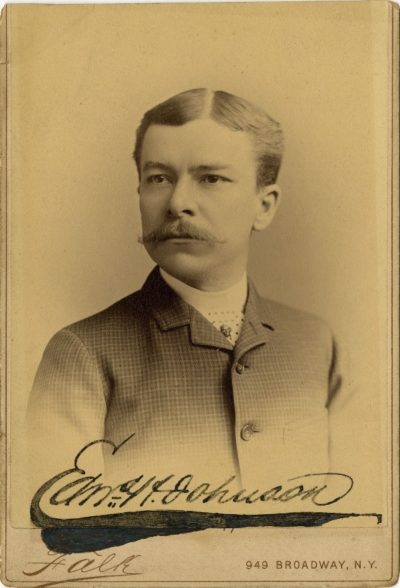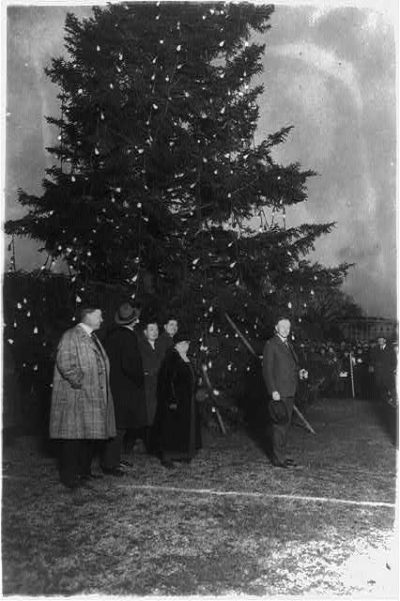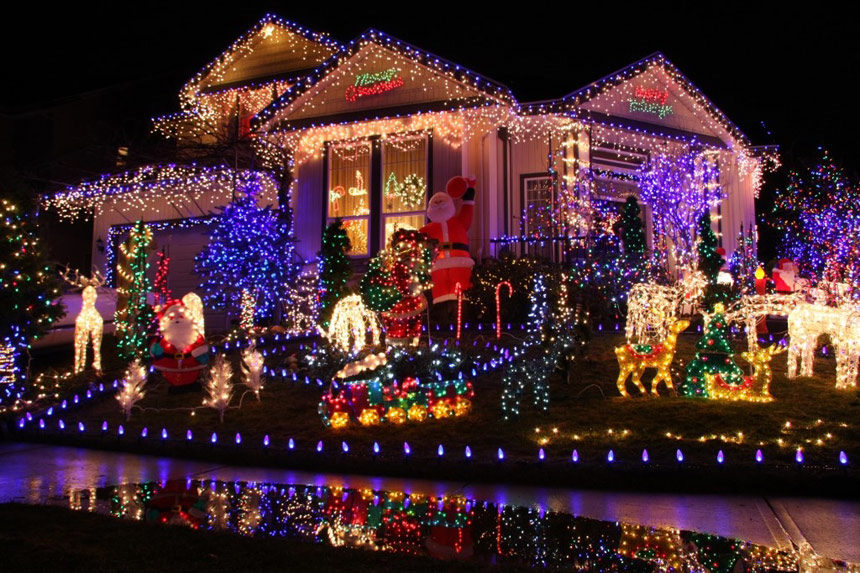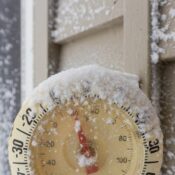You may not know his name, but you see the results of his work every holiday season. He’s affected businesses, city streets, public parks, and homes. Christmas at Rockefeller Center wouldn’t get its big opening moment and entire television programs wouldn’t exist without his singular innovation. We’re talking about Edward H. Johnson, the Father of the electric Christmas tree light.

Born in 1846, Edward Hibberd Johnson hailed from Philadelphia. By age 19, he was working for General William Jackson Palmer on the Kansas Pacific Railroad. Johnson eventually became Palmer’s assistant, and in 1871, Palmer dispatched him to manage the Automatic Telegraph Company in New York. At Automatic, Johnson hired a 24-year-old Thomas Edison. Johnson enthusiastically supported Edison, even helping him to found his Menlo Park, New Jersey headquarters.
Johnson had an obvious talent for recognizing the gifts of others. While working with Edison, Johnson also hired inventor Frank J. Sprague, who introduced a mathematical system for trying inventions, rather than Edison’s legendary trial and error method.

By 1882, Johnson had become the vice president of the Edison Electric Light Company. During his tenure, he lived in one of the first “wired” areas of New York City. Johnson got the idea to take advantage of the available electricity and commissioned a set of specially made Christmas bulbs at the company in order to replace the candles that were frequently used to light Christmas trees. In fact, early print ads for electric lights illustrated the dangers of using candles on trees, including pictures of “candle trees” consumed by flames. The first electric strands that Johnson commissioned had 80 red, white, and blue walnut-sized bulbs, which he used to decorate a tree in his own home. Journalist William Augustus Croffut visited Johnson and wrote a story about the tree for the Detroit Post and Tribune.
While Johnson became well-known in the overall business of electricity (he worked for the company that became General Electric, and the Edison Electric Light Company would itself become Con Ed), his reputation grew as “Father of the Electric Christmas Tree Light.” The practice got more popular when President Grover Cleveland introduced an electrically lit tree to the White House in 1895. By 1901, Edison Electric was selling nine-socket lighting strings and taking out ads in publications like the Ladies Home Journal.
The Field Family’s Disney Parks Display from The Great Christmas Light Fight.
Today, it’s estimated that Americans spend more than $6 billion annually on Christmas decorating. More than 80 million homes decorate and over 150 million strands of lights are sold each year. Since 2013, ABC has hosted The Great Christmas Light Fight, a decorating competition show that gives a $50,000 prize in each episode. That’s all part of a massive tradition that started because one innovator wanted to try something new. It’s no wonder that the symbol for an idea is the lightbulb.
Become a Saturday Evening Post member and enjoy unlimited access. Subscribe now




Comments
I have strong memories of Christmas tree lights from early 50’s boyhood that required saving up to buy a string of lights at the local F.W.Woolworth store in Shreveport, La. Railroads crisscrossed the area so a short trip out into the country yielded plenty of small pine trees along the roadbed to choose from, with the railroad only too happy for tree removal. Mother allowed me to place a small three-foot tree in my bedroom. Regrettably, my dime-store light strings were series-wired so if one bulb burned out or wasn’t screwed in tightly, the entire string remained dark and unlit. I quickly learned to both buy one extra bulb and to make sure each bulb was well seated in its socket. And since the string was wired in series, there was no convenience of extended each set by just plugging the next string into the end of the previous one. All strings began and ended at that first plug. But, oh, the fun of getting both 10-bulb strings going, putting them on my little tree then turning out my bedroom lights and watching those red, green, blue, orange and white tree lights for what seemed like hours before nodding off to sleep at night.
Edward Hibberd Johnson is yet another example of the right person having been born at the right time. As you stated, he also recognized the talents of Thomas Edison and Frank Sprague to which their combined efforts greatly accelerated the development of the modern electric Christmas lights. All of this during the last decades of the 19th century, following the Civil War.
I shudder to think of how many fires there were by people who simply wanted light on their trees, but were naive about the dangers until it was too late. It’s no wonder they’ve been popular for so many decades. Some of it now IS too over the top, but it’s a lot of fun to watch ‘The Great Christmas Light Fight’, and drive around certain neighborhoods with the best lights. Candy Cane Lane in nearby Woodland Hills is a yearly ‘must-see’ for that in-person light/display fix.
The only low point was around the turn of the century when the first “icicle” lights came out. They were these ugly, boring spaghetti string of far apart white lights I found repulsive. They were anti-Christmas lights. Cheap looking and ugly, they took very little time or effort to put up, and looked it. If you don’t like Christmas lights, and/or are really lazy—don’t even bother at all, please.
Today’s icicle lights are nothing like those disgusting things. They’re varied, colorful, sequential, chasing etc. and have come a long way. While not replacing traditional lights, they do have a rightful place now in conjunction with them depending on the house, and where they can be utilized best.